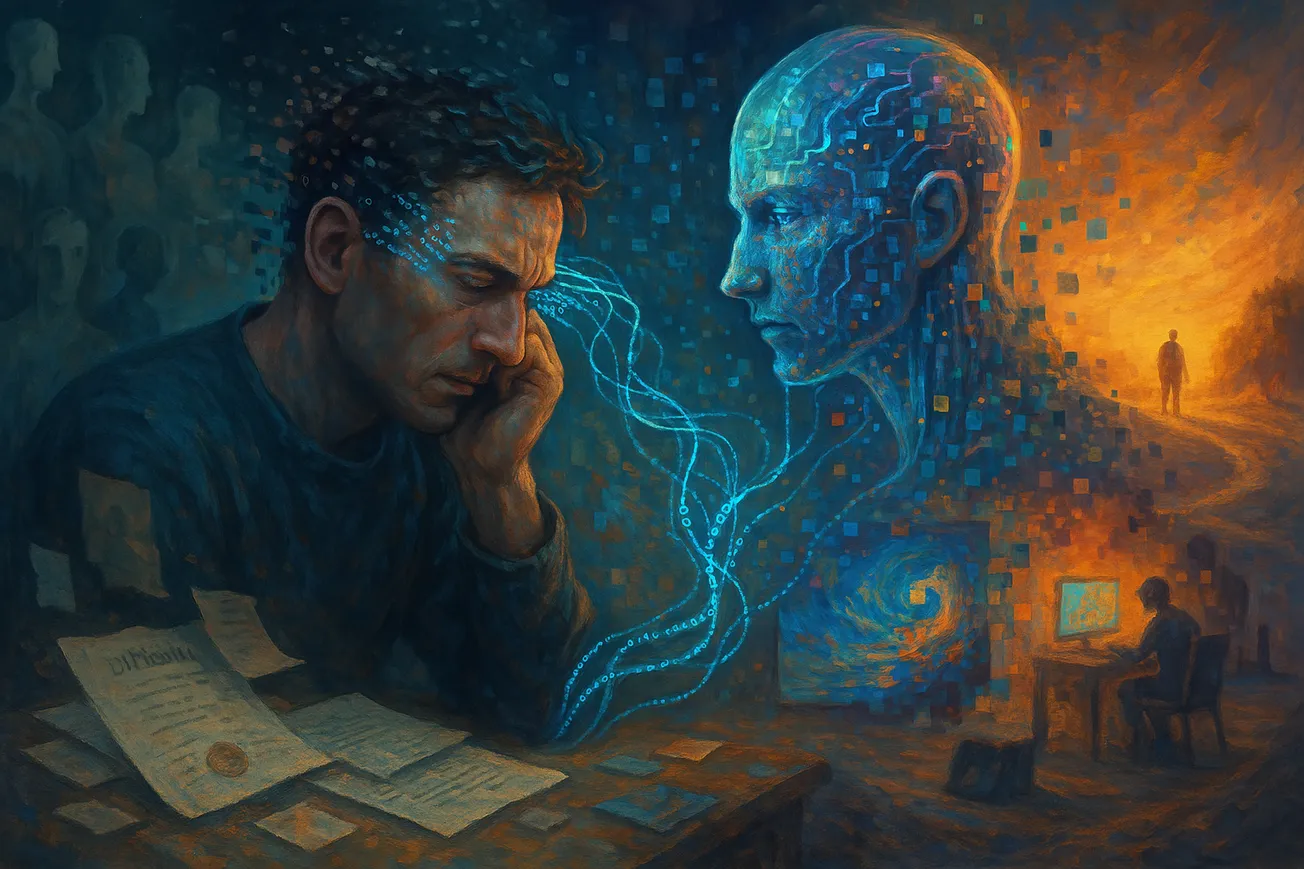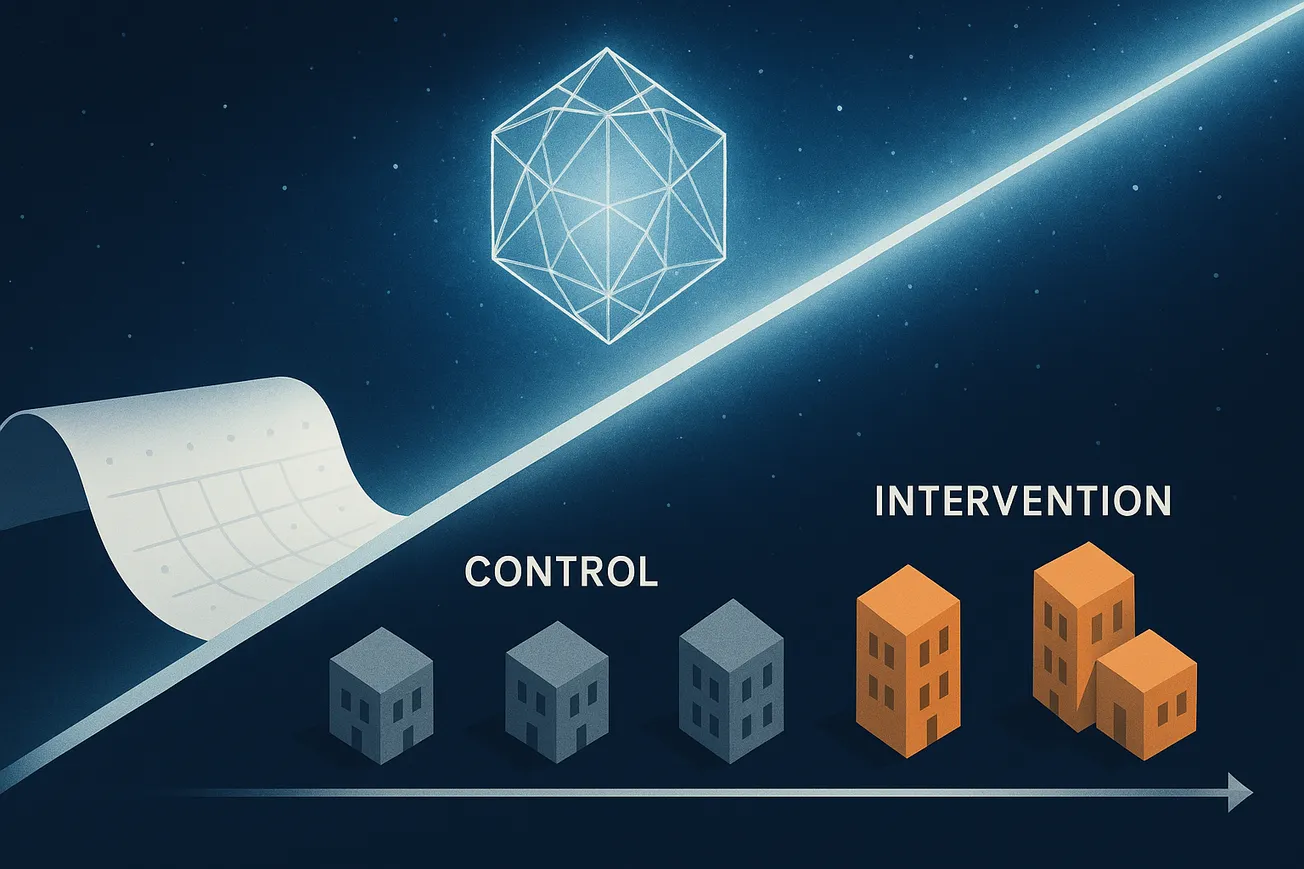Table of Contents
Introduction
The Indivisible Stochastic Approach is a recent conceptual framework that reformulates quantum theory in terms of underlying stochastic (probabilistic) processes, rather than mysterious wavefunctions or multiverses. This approach has deep implications for how we understand reality at a fundamental level. Notably, it challenges the sharp divide between deterministic general relativity (GR) and probabilistic quantum mechanics (QM) by suggesting both might be understood within a single probabilistic paradigm. Below, we outline the core ideas from this approach – focusing on quantum gravity and the structure of physical theory – and explain why each matters for advancing a fundamental understanding of reality. The ideas are prioritized by their foundational significance, not by how easy they are to implement.
Core Ideas
Quantum Phenomena as Indivisible Stochastic Processes:
At the heart of this approach is the idea that quantum behavior can emerge from a deeper level of classical stochastic dynamics in which systems follow definite trajectories that evolve probabilistically rather than deterministically. An indivisible stochastic process means the dynamics aren’t memoryless (non-Markovian) – you can’t break them into independent sub-steps – which allows interference and other quantum-like effects to arise. This is foundationally significant because it posits that quantum mechanics might not be a fundamental departure from classical physics at all, but rather a special probabilistic regime of it. If true, it offers a new realist picture of nature where each particle has a real (if unpredictable) path, and the Schrödinger wavefunction is just a calculational tool capturing the probability distribution of those paths (Theories of Everything with Curt Jaimungal - "There is No Quantum Multiverse" | Jacob Barandes Transcript and Discussion). This idea is quite novel and underexplored; earlier hints like Nelson’s stochastic mechanics existed, but a complete exact correspondence between classical stochastic systems and full quantum theory was only recently demonstrated . It matters for understanding reality because it suggests that chance (not determinism) might be the bedrock of physical law – blurring the line between classical and quantum and potentially simplifying the “weirdness” of quantum phenomena as just complex probability theory.
A Probabilistic Formulation of General Relativity (the Missing Piece):
While quantum theory has long been cast in probabilistic terms, standard general relativity is purely deterministic – given initial conditions, Einstein’s field equations yield a single predictable spacetime. The Indivisible Stochastic Approach highlights a conceptual gap: we lack a probabilistic (non-quantum) version of GR analogous to how classical stochastic dynamics underlie quantum mechanics. In other words, there’s no well-established way to describe a spacetime that evolves with classical randomness. This gap is important because it suggests our understanding of gravity (and thus spacetime/reality) might be incomplete – perhaps nature’s true foundational description of gravity should also involve probabilities. Such a theory would describe not one unique geometry, but an ensemble or distribution of possible spacetime configurations evolving over time. This is a radical shift from Einstein’s vision, but it could be crucial for unifying gravity with quantum physics. It remains largely unexplored – most efforts instead try to quantize gravity directly, skipping over the step of “classical but stochastic” gravity. By pointing out this missing piece, the approach urges us to consider that reality’s deep structure might require introducing probabilistic elements into spacetime itself, not just into matter fields.
Speculation: Fully Probabilistic GR = Quantum Gravity?
One of the bold implications is the conjecture that if we did manage to formulate a completely probabilistic version of general relativity, it might in itself constitute the long-sought theory of quantum gravity. In other words, quantum gravity may not require new quantum ingredients for spacetime, but rather a reformulation of classical GR as a stochastic theory. If every geometric degree of freedom can fluctuate according to probabilistic rules (much like particles in stochastic quantum theory), the result could mimic what a “quantum” superposition of spacetimes would otherwise describe. This idea is speculative and highly novel – it turns the usual approach on its head by suggesting we don’t need to quantize gravity in the traditional sense, because a stochastic classical gravity would already encapsulate the necessary uncertainty and fluctuations. Some recent work echoes this theme: for example, researchers have proposed hybrid models where classical spacetime undergoes probabilistic jumps or fluctuations, avoiding the need for a full wavefunction of the universe (Physics - Might There Be No Quantum Gravity After All?) (Physics - Might There Be No Quantum Gravity After All?). If such ideas hold water, their foundational significance is enormous: reality’s unity would be restored by a common language of probability, and the apparent gulf between GR and QM would close. However, this line of thought is underexplored and somewhat speculative – it challenges decades of thinking and would need to show that a jittery classical spacetime can reproduce known quantum gravitational phenomena. Still, the mere possibility profoundly influences our conception of what “quantum gravity” might fundamentally be.
Challenges of Stochastic Reasoning in a Dynamical Spacetime:
Introducing probability into spacetime itself is not straightforward. Unlike a particle moving in time, spacetime is the arena of physics – if the arena itself fluctuates, even defining probabilities becomes tricky. One conceptual issue is how to define a probability distribution over geometries when the notion of time and space is part of what’s evolving. In a fixed background, we can talk about probability of events given a stable reference frame; but with dynamical spacetime, even the meaning of “an event” or its timing can blur. There are also technical issues: general relativity is highly non-linear, so superposing or averaging solutions is problematic (two valid spacetime solutions averaged together typically do not satisfy Einstein’s equations). This means we can’t naively take a mix of geometries – we need a new formalism to handle such mixtures properly. Additionally, if spacetime can fluctuate, questions arise like: does it preserve causality on average? do small random curvature fluctuations grow or vanish? These challenges are a big reason why a probabilistic GR has not been developed in the mainstream. They highlight that our usual probabilistic reasoning (which assumes a fixed stage on which randomness plays out) may break down when the stage itself is random. Acknowledging and addressing this issue is crucial for the Indivisible Stochastic Approach: it must extend the notion of indivisible stochastic processes to the gravitational field. This is under active thought by only a few researchers and is quite underexplored. Solving it would be foundationally important because it would provide the mathematical and conceptual infrastructure for the above idea that “stochastic gravity = quantum gravity.” In summary, this challenge underscores how new thinking is required to apply probabilities to the fabric of reality itself, which is a frontier problem at the intersection of quantum foundations and general relativity.
Expectation Values vs. Physical Reality (Ensemble vs. Event):
A key philosophical critique raised in these discussions is the difference between measurement averages and actual physical phenomena. In standard quantum mechanics and semi-classical gravity, we often compute expectation values (averages) – for example, the average stress-energy of a quantum field, or the expected position of a particle. However, these averages are not what any single experiment observes; they are statistical summaries over many possible outcomes. Relying on them can obscure the truth that nature produces one outcome at a time. For instance, a quantum particle doesn’t smear out in space according to its probability distribution – it arrives at one definite point each trial, even though the distribution predicts the odds of various points. Likewise, in a gravity context, using Einstein’s equation (the usual semi-classical approach) might be conceptually flawed because spacetime could respond differently to each actual fluctuation of the stress tensor, not just to the average of many** (Three little paradoxes: Making sense of semiclassical gravity)**. The Indivisible Stochastic Approach emphasizes this distinction: a truly fundamental theory should ideally describe reality trial-by-trial, not only in terms of ensemble averages. This matters for understanding reality since it reminds us that what’s “real” is the actual event (the specific path the system takes or specific spacetime realized), whereas the expectation value is an abstraction. Standard quantum theory, with the Born rule, gives only probabilities – it doesn’t say which outcome happens, only the distribution if you repeat many times. By insisting on a framework where the basic equations deal in actual stochastic events (and their probabilities) rather than continuous wavefunctions or mere expectation values, one stays closer to physical reality. This idea is not entirely new (it’s a long-standing point in quantum interpretation debates), but it is often underappreciated. It becomes especially novel when extended to gravity: it suggests that to truly unify quantum and gravitational realms, we may need to move beyond the comfort of expectation values and embrace a description of one-real-spacetime-at-a-time (with probabilities for which one occurs). In short, this idea refines our foundational understanding by clarifying that averages aren’t the world, they’re a summary – and a fundamental theory of reality should aim to describe the world’s actual instances, not just ensemble means.
Summary
Quantum Phenomena as Indivisible Stochastic Processes
At the heart of this approach is the idea that quantum behavior can emerge from a deeper level of classical stochastic dynamics. These systems follow definite trajectories that evolve probabilistically, not deterministically.
An indivisible stochastic process means the dynamics are non-Markovian — they cannot be broken into independent sub-steps — which allows for quantum-like interference effects.
This is foundationally important because it offers a new realist picture of nature where particles have real (though unpredictable) paths, and the wavefunction is just a calculational tool.
Quantum theory might be a special case of more general, non-Markovian probability theory.
The Missing Theory: Probabilistic General Relativity
Unlike quantum theory, general relativity (GR) is deterministic: Einstein’s field equations predict a unique evolution of spacetime. But we lack a classical probabilistic (non-quantum) version of GR.
This is a deep conceptual gap. A theory where spacetime itself evolves stochastically, not deterministically or via quantization, would be a foundational reformulation of gravity.
Could the "quantum-ness" of gravity simply be due to underlying probabilistic structure, rather than a wavefunction of geometry?
Conjecture: Fully Probabilistic GR = Quantum Gravity
A bold proposal is that a fully probabilistic version of GR might itself be the theory of quantum gravity.
Instead of quantizing GR, one might reformulate it as a stochastic theory — spacetime geometry becomes a probabilistic process. This may already capture the quantum behavior we seek.
This would mean quantum gravity is not “quantum” in the Hilbert space sense, but “quantum” in the stochastic sense — perhaps governed by the same indivisible probabilities that describe quantum matter.
This approach is still speculative, but if true, it would represent a major unification of physics.
The Difficulty of Applying Probability to Dynamical Spacetime
In quantum mechanics, we define probabilities over configurations at fixed times. But in dynamical spacetime, the very distinction between time and space fluctuates.
The Einstein field equations tell us how the metric evolves, but if the metric itself fluctuates stochastically, we lose the fixed structures needed to define conditional probabilities.
Thus, even defining:
\[P(configuration at time t2∣configuration at t1)\]
becomes non-trivial, because “time” and “space” slices are themselves part of what's fluctuating.
This is a deep foundational challenge — how to define probabilistic laws when the geometry of the arena itself is uncertain.
Expectation Values Are Not Events
A critical conceptual point: expectation values in quantum theory do not represent actual events — they are statistical summaries of measurement outcomes.
In standard quantum mechanics:
\[\langle \hat{A} \rangle = \mathrm{Tr}(\rho \hat{A})\]
This tells us the average result we'd get if we measured observable A^\hat{A}A^ many times in state ρ\rhoρ. But in any single instance, nature produces one outcome, not an average.
The Born rule gives the probability:
\[P(a) = |\langle a | \psi \rangle|^2\]
Yet we often see physicists compute expectation values and then treat them as if they describe “what’s happening” physically — especially in semi-classical gravity, where we plug:
\[\langle \hat{T}_{\mu\nu} \rangle\]
into the Einstein field equations:
\[G_{\mu\nu} = 8\pi G \langle \hat{T}_{\mu\nu} \rangle\]
This is conceptually dubious unless we believe that expectation values are real. The Indivisible Stochastic Approach challenges that — and insists that fundamental reality involves single-event stochasticity, not ensemble averages.
Conclusion
The Indivisible Stochastic Approach offers a refreshing perspective on some of the deepest problems in physics. By treating quantum effects as arising from classical-like probabilistic laws, it blurs the line between quantum and classical, suggesting that chance might be the common denominator of reality. The key ideas above – from the possibility of probabilistic spacetime to the pitfalls of focusing on expectation values – are prioritized for how they reshape our conception of the universe at the most basic level. Together, they paint a picture in which a fully probabilistic formulation of physics could unify our understanding of matter, measurement, and spacetime, potentially revealing quantum theory and general relativity to be two sides of the same stochastic coin. Each idea is at a different stage of development (some merely conjectural), but all are fundamentally aimed at one goal: advancing our grasp of reality’s foundational architecture.
Inspiration
"There is No Quantum Multiverse" | Jacob Barandes




